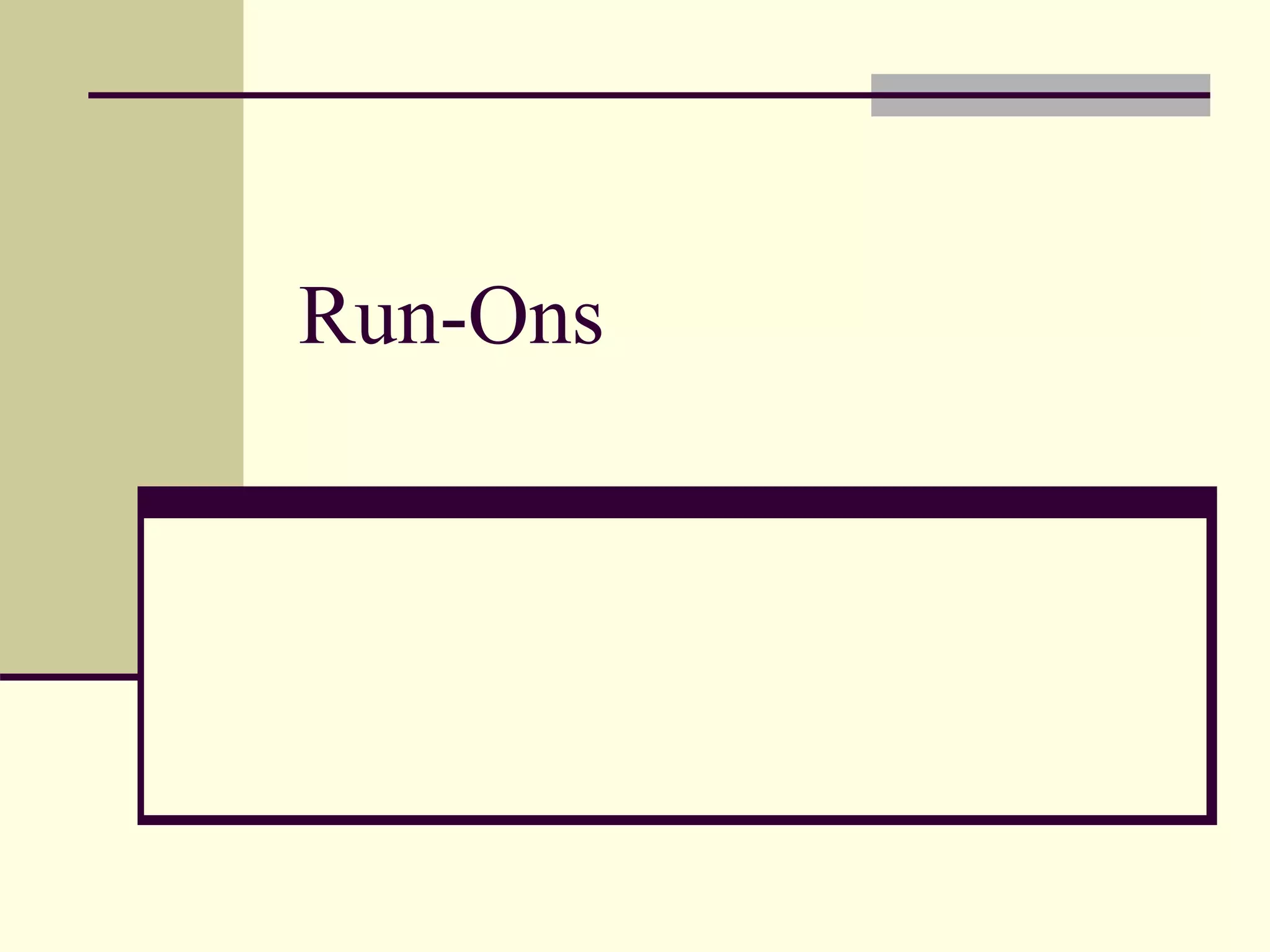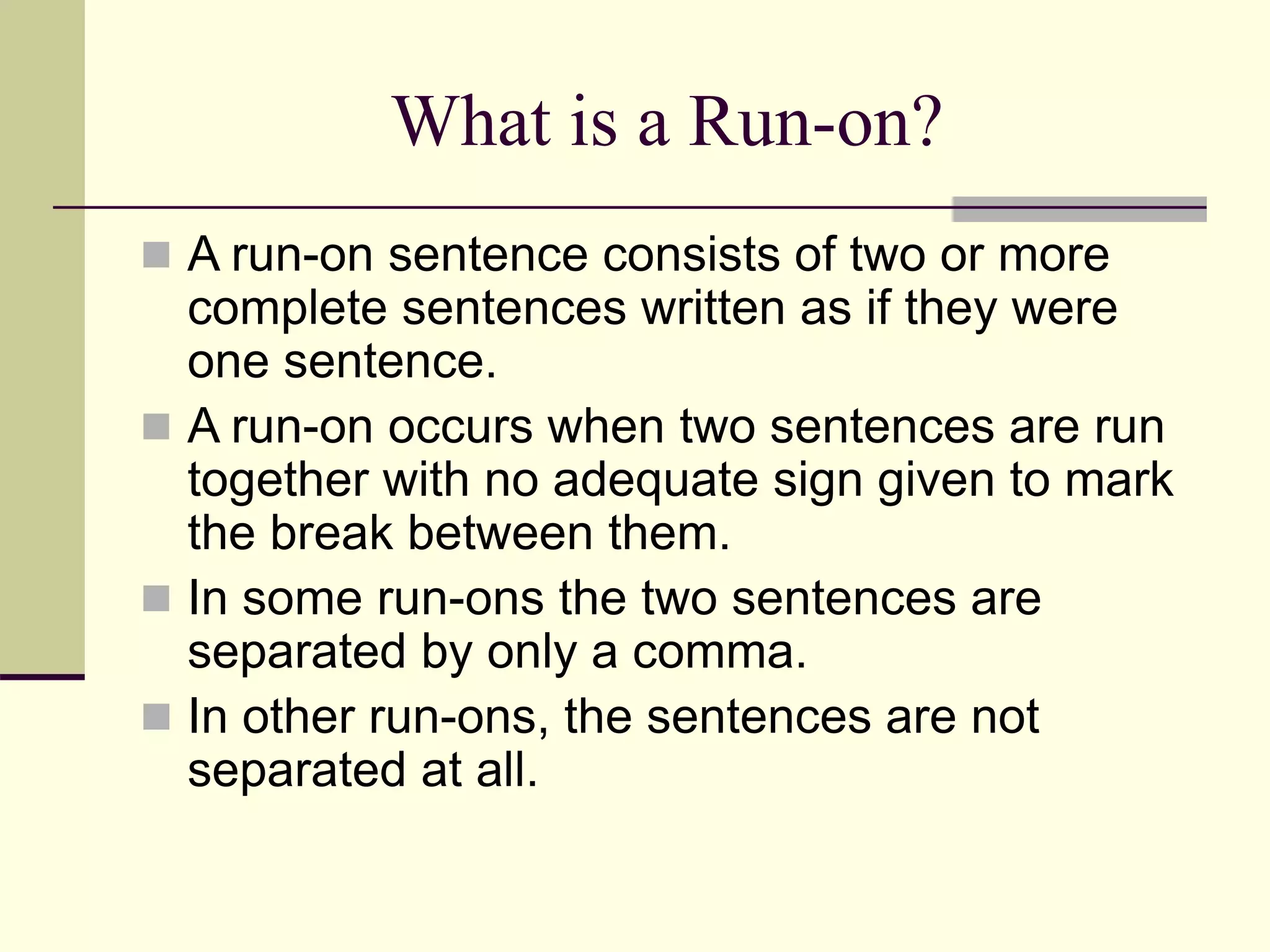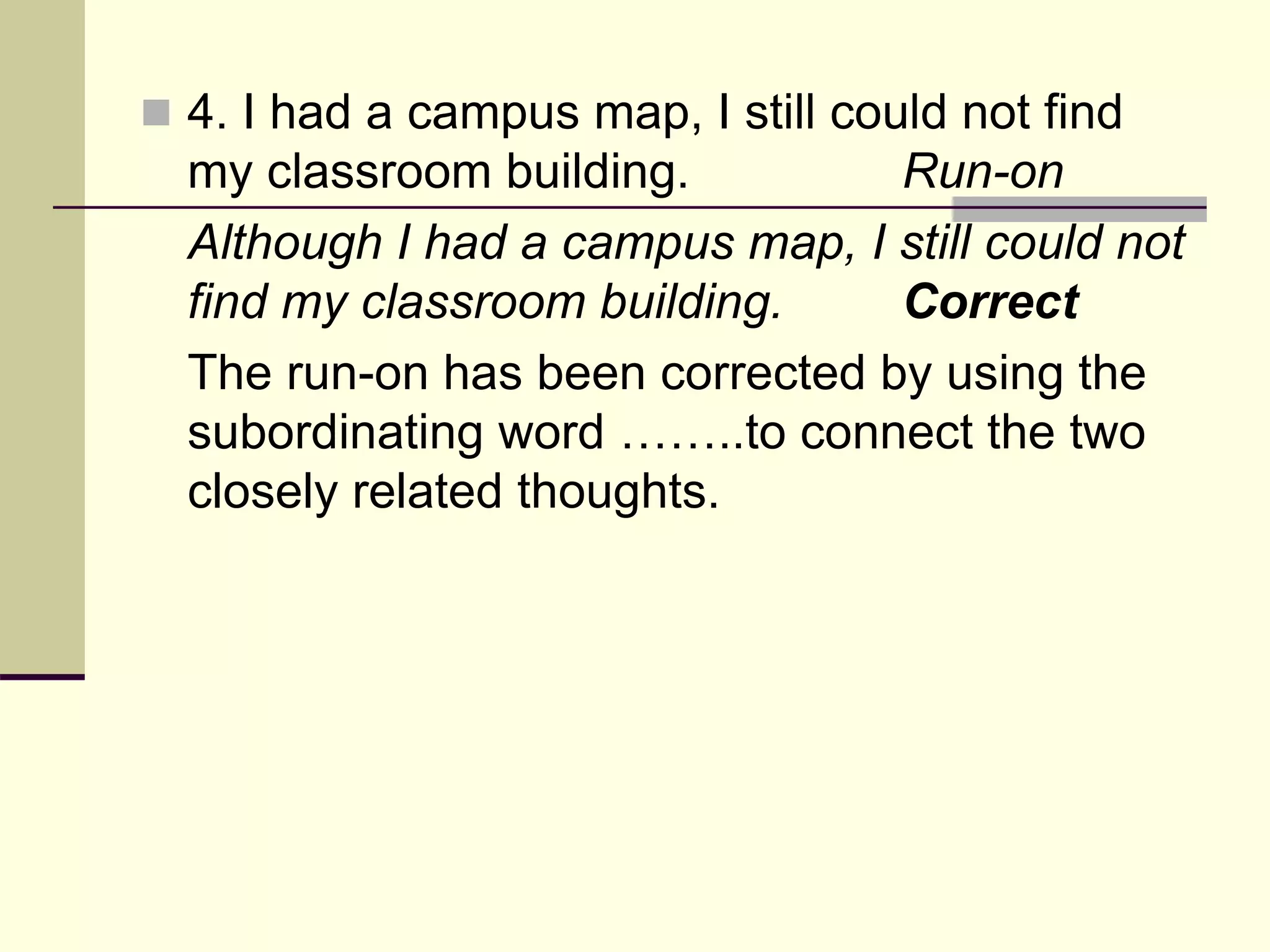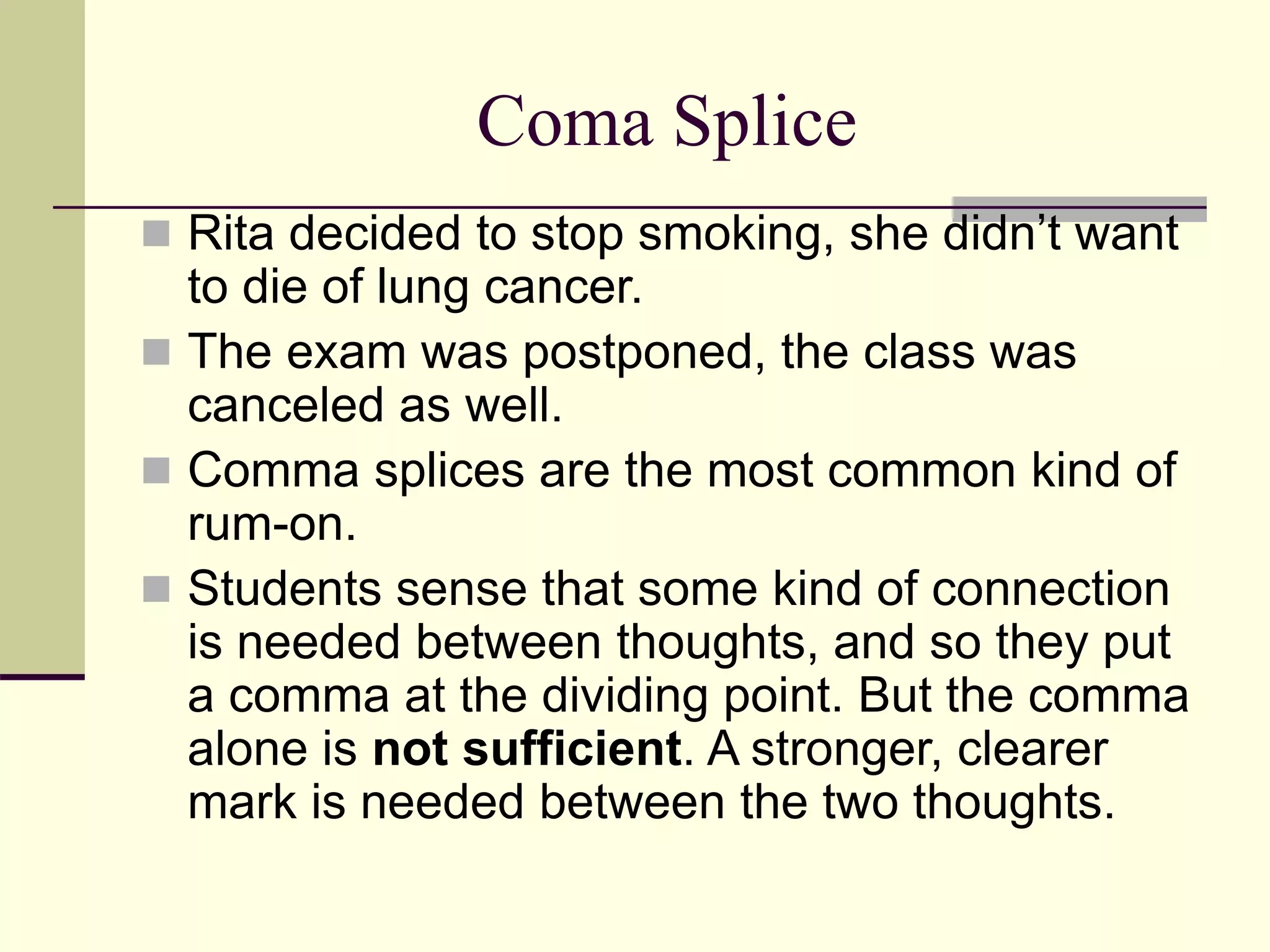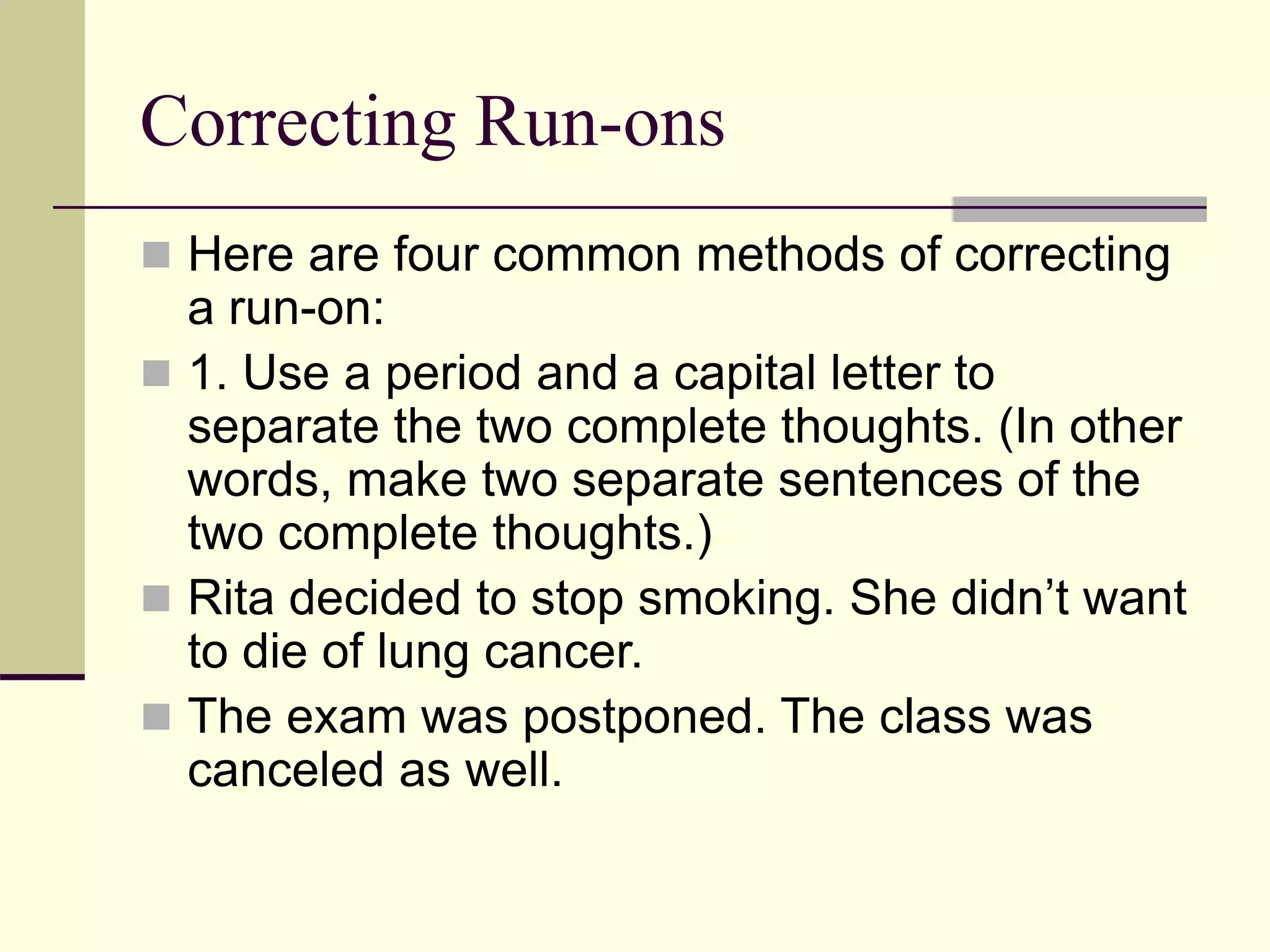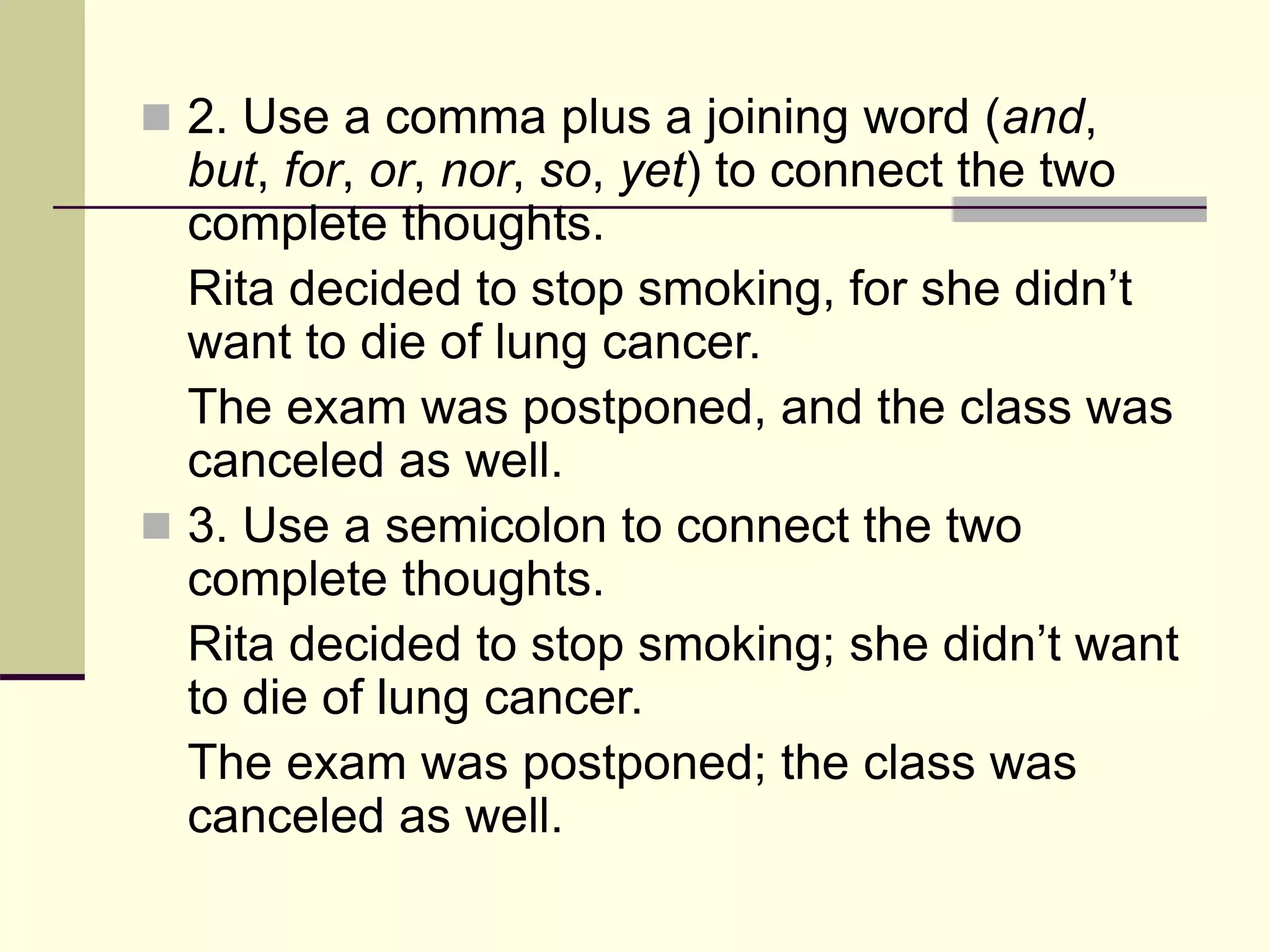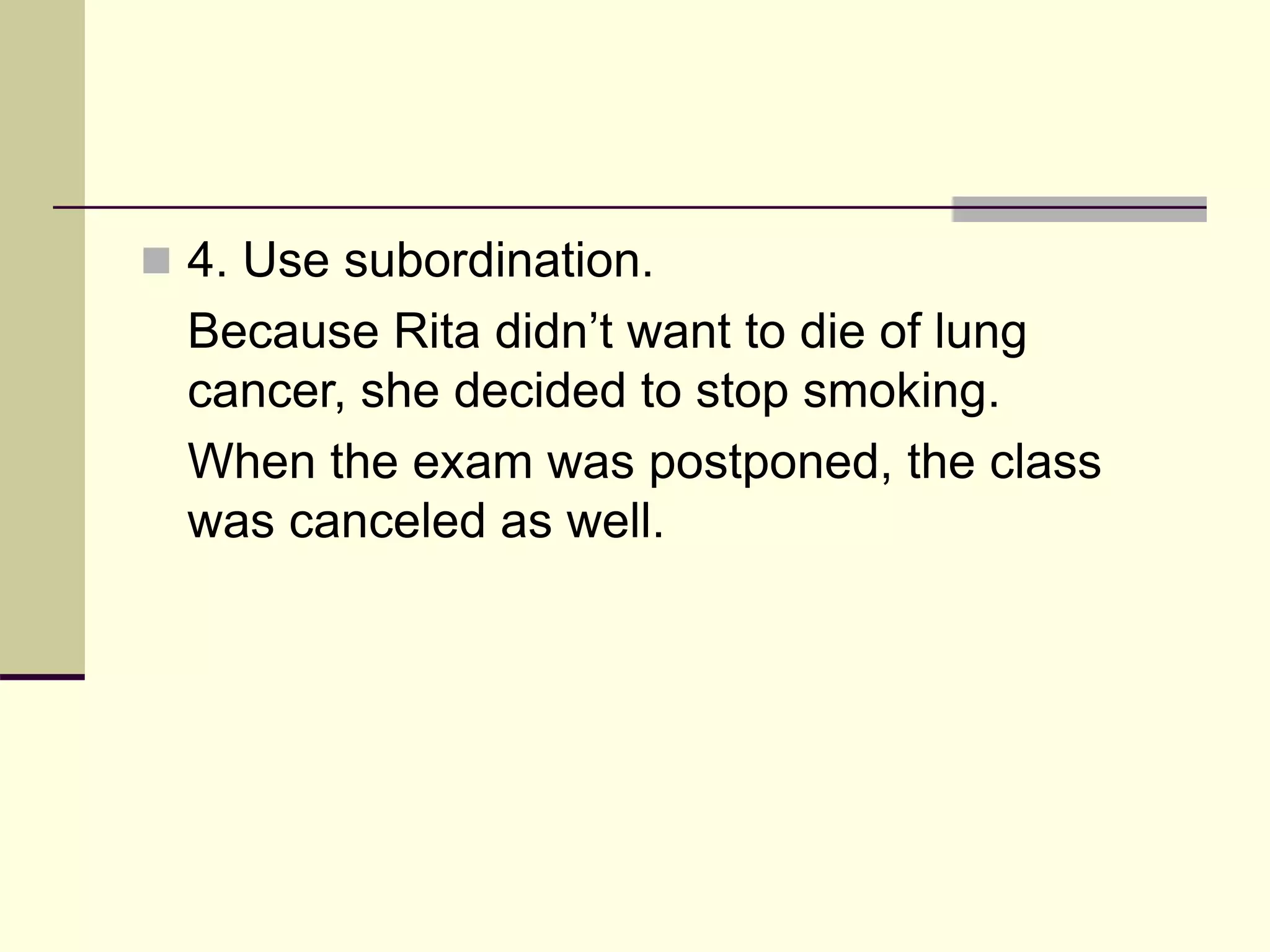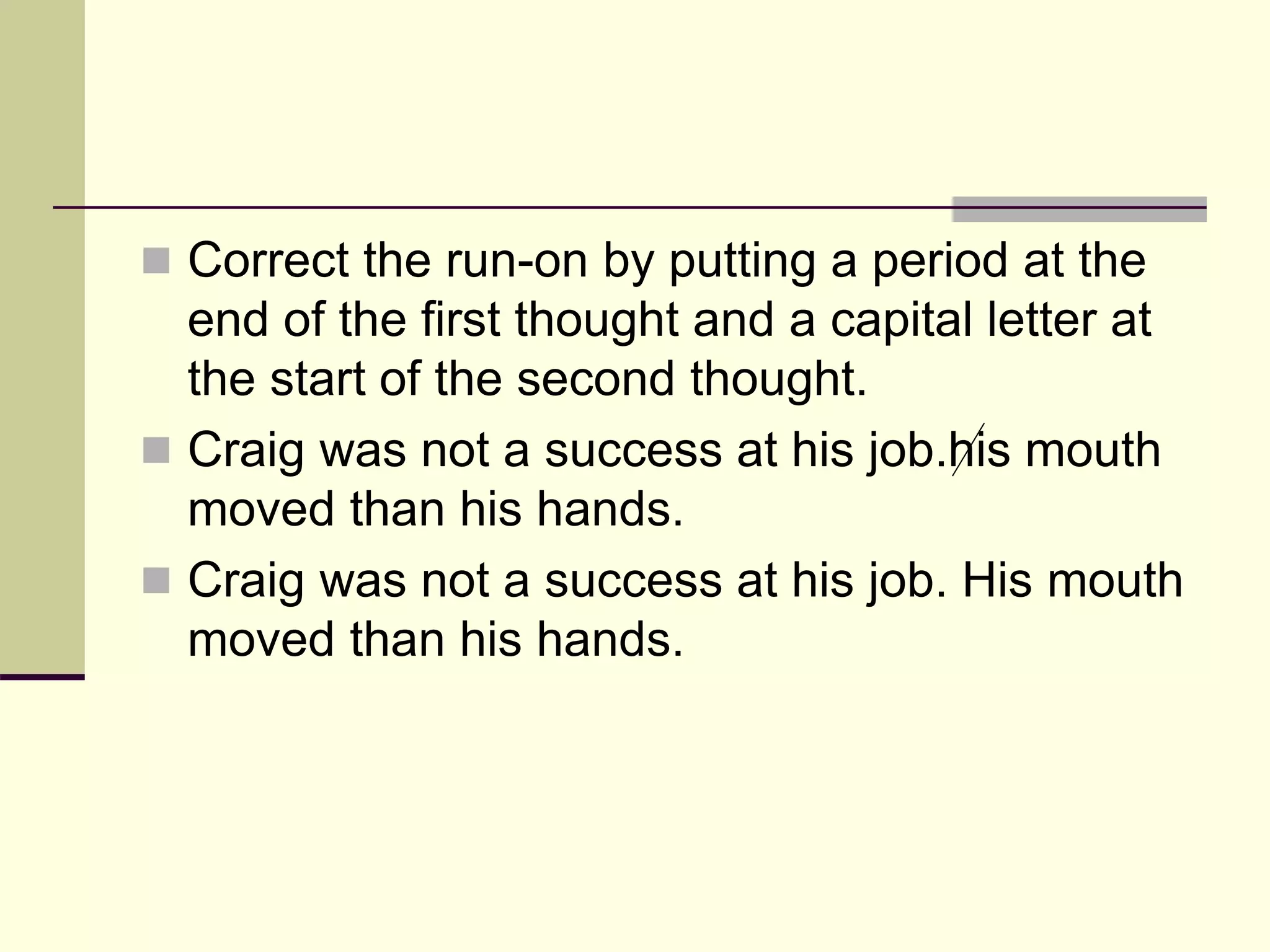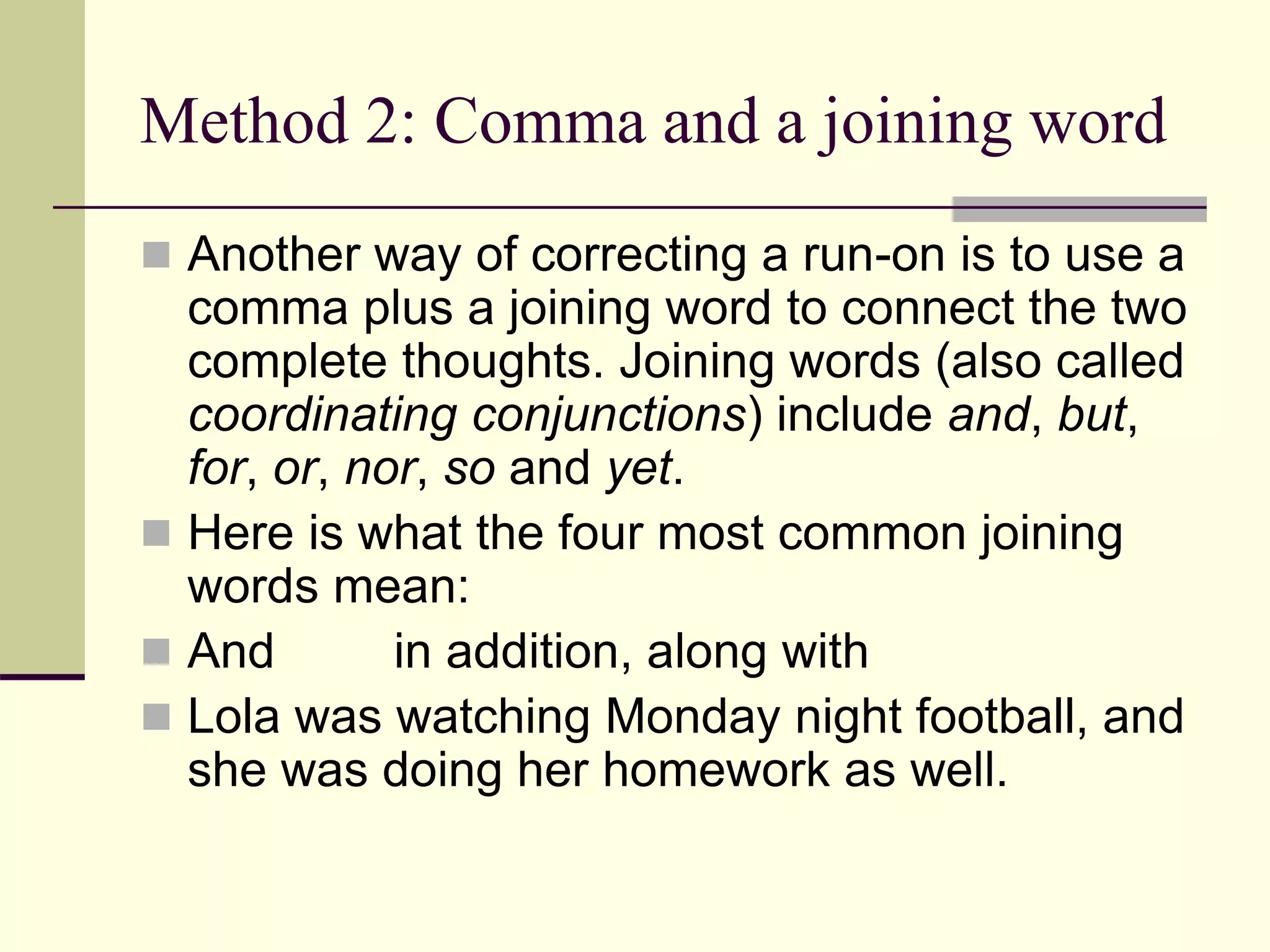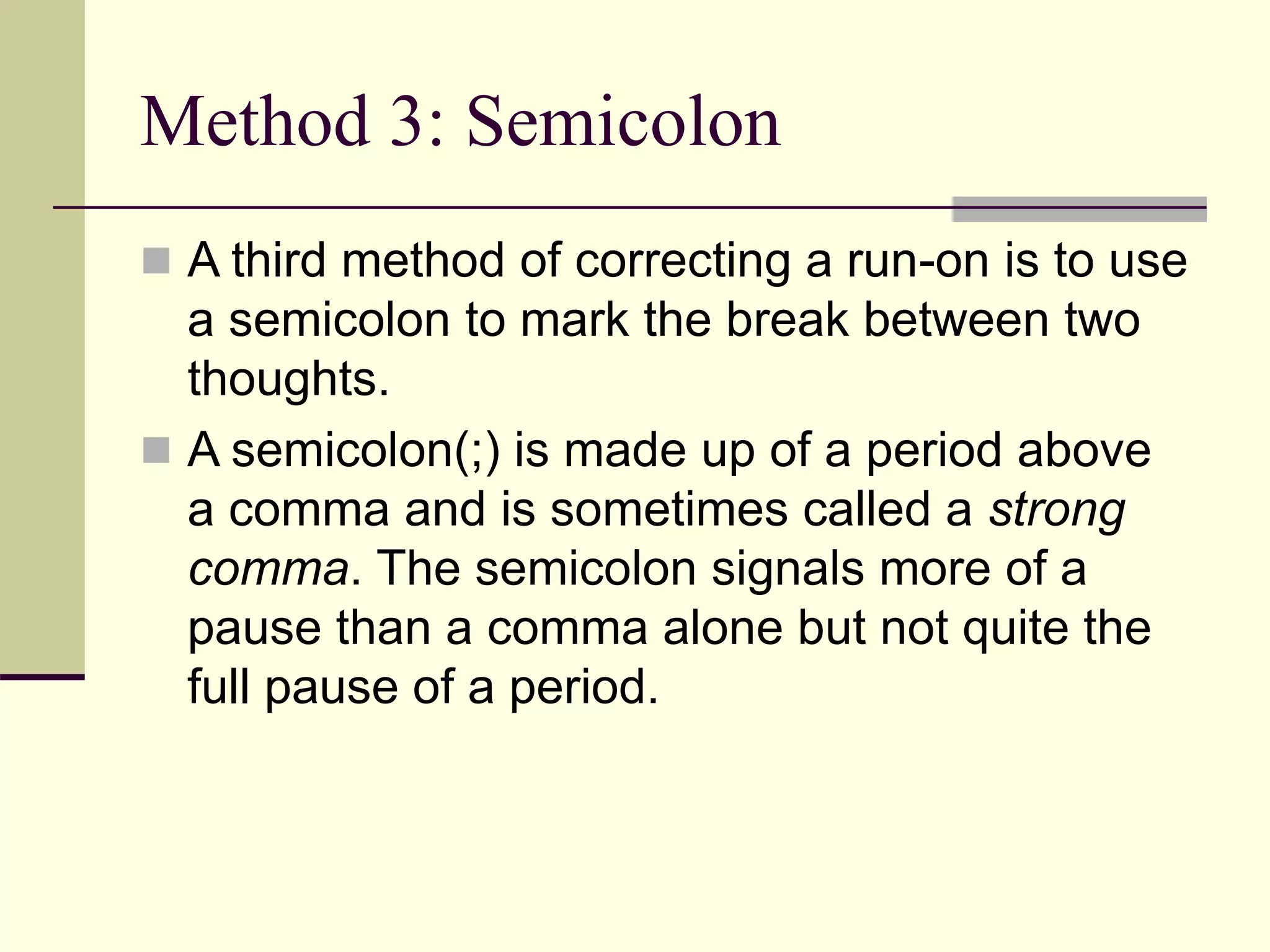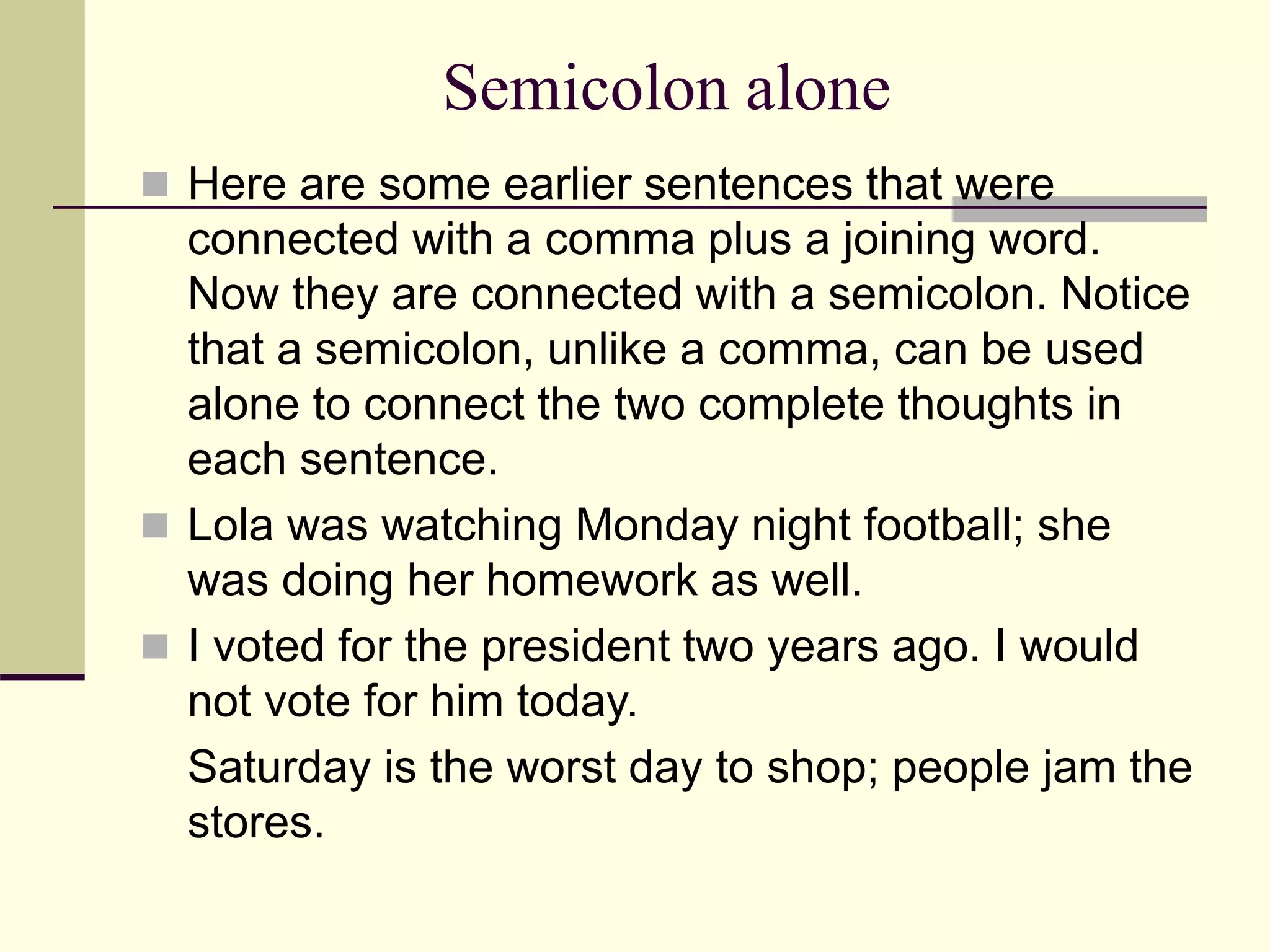The document discusses different types of run-on sentences and methods for correcting them. It defines run-on sentences as consisting of two or more complete sentences written as one without an adequate break between them. There are two main types - fused sentences with no punctuation and comma splices using only a comma. Four common methods to correct run-ons are outlined: using a period and capital letter to separate sentences, adding a comma and joining word, using a semicolon, or subordinating one thought. Transitional words that can be used with semicolons are also provided.
